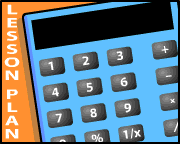|
Volume 3 Issue 08
April 11, 2005
Math Is Marvelous
WELCOME! to Education World's Early Childhood Newsletter. Every other week, I'll share some ideas on a familiar teaching theme. Hopefully you will find a new activity idea or two -- or a new twist on one of your old favorites! Since I know you are very busy, I'll be short and sweet -- like most of activities I suggest.
Tell a friend about us! Invite them to sign up for their own FREE subscription at /newsletter_form
April is Math Awareness Month -- the perfect time to bring math to life in your classroom!
 Our world provides us with plenty of mathematic challenges. You can help your students prepare to meet those challenges by arming them with the ability to think mathematically and problem solve creatively. Lessons in math help your students build many other skills. As students sort, sequence, and create patterns, they are developing visual memory and reasoning skills. As they identify numerals and corresponding sets of objects, they are learning the basics of addition and subtraction. Our world provides us with plenty of mathematic challenges. You can help your students prepare to meet those challenges by arming them with the ability to think mathematically and problem solve creatively. Lessons in math help your students build many other skills. As students sort, sequence, and create patterns, they are developing visual memory and reasoning skills. As they identify numerals and corresponding sets of objects, they are learning the basics of addition and subtraction.
We have suggested some activities and links to help you kick off your lessons and make math truly marvelous!
Susan LaBella
Editor, Early Childhood Education Newsletter
NOODLE NUMBERS
Gather a supply of pasta noodles of various shapes (bow ties, wheels, spirals, elbows, and so on). Give each child a piece of construction paper and glue. Invite children to create patterns by gluing different pasta shapes in rows onto their paper. Then encourage children to count the number of pasta pieces used in each row and to write that number (or glue a noodle number) at the end of each row.
MATCHING IS MATH
Create paper butterflies with matching wing patterns. Color each butterfly different colors. Cut the butterflies in half and place the halves in a box. Invite children to correctly match the halves.
ORDER, ORDER!
Read to children Noisy Nora by Rosemary Wells (Puffin Books). Talk about some of the things Nora did to get attention. Next, discuss the order in which Nora did those things. Ask, “Which thing did she do first, second, last?” Extend the concept of sequencing and ordinal numbers by asking children to choose one of the things Nora did and to illustrate it. Then record each child’s sentence at the bottom of his or her picture: “Nora slammed the windows first” and so on. Sequence the students’ pictures to retell the story.
SAME NUMBER, DIFFERENT LOOK
Discuss with children the many ways a number is represented. Demonstrate some of those ways on an easel pad (numeral, picture set, word, strokes). Give children a large sheet of paper and ask them to choose a number (1-10) and to show it in as many ways as possible. At circle time, let students share their work and talk about why people record numbers in different ways. Then extend the lesson by encouraging children to look through newspapers and magazines to find different ways that numbers from 1 to 10 are shown. Children can cut out the various representations of numbers and create a collage.
MORE OR LESS?
Place a group of small plastic farm animals in a basket. Invite a child to take a handful of animals, count them, and say the number aloud. Create a spinner labeled “More” on one side and “Less” on the other, and ask a second child to give it a spin. If the arrow stops at “More,” the child must count out more farm animals than the first student had. If the arrow stops at “Less,” the child must count out fewer farm animals than the first student had.
MEASURE ME!
Invite children to draw full-body outlines of themselves. Then let children use connecting or linking cubes to measure the length of their actual legs, arms, torso, and so on. Help children write those measurements on the correlating body parts in their pictures.
GO ON A MEASURE HUNT!
Talk about basic units of measure with children. Show children the length of an inch, a foot, and a yard. Provide small groups of children with pieces of string that represent an inch, a foot, and a yard. Invite the groups to search the classroom to find items that are best measured in inches, feet, and yards. (For example, a crayon is best measured in inches, a table in feet or yards, the classroom in yards or feet.) Create a chart with three columns: Inches, Feet, and Yards. Have children report their findings as you write the names of measured items in the appropriate column(s) on the chart. Finish by asking each group to choose an item to “measure’ with the appropriate length of string. Write statements that tell about those measurements. For example, Our table is 2 yards long.
Check out the following Web sites for more background and activities.
Introducing Calculators
Kids learn about calculators -- what they are and how to use them.
http://www.educationworld.com/a_tech/techlp/techlp019.shtml
I Know My Shapes and Colors
Help kids see the importance of shapes in their world with this online activity.
http://www.educationworld.com/a_tech/webquest_orig/
webquest_orig009b.shtml
AAA Math Kindergarten
Kids can practice basic math skills -- and have fun too -- with interactive practice pages.
http://www.aaaknow.com/kinder.htm#topic2
Count Us In
An online game that reinforces the concept of one more.
http://www.abc.net.au/countusin/games/game11.htm
Numeral Recognition
A lesson plan on numeral recognition.
http://www.col-ed.org/cur/math/math05.txt
|